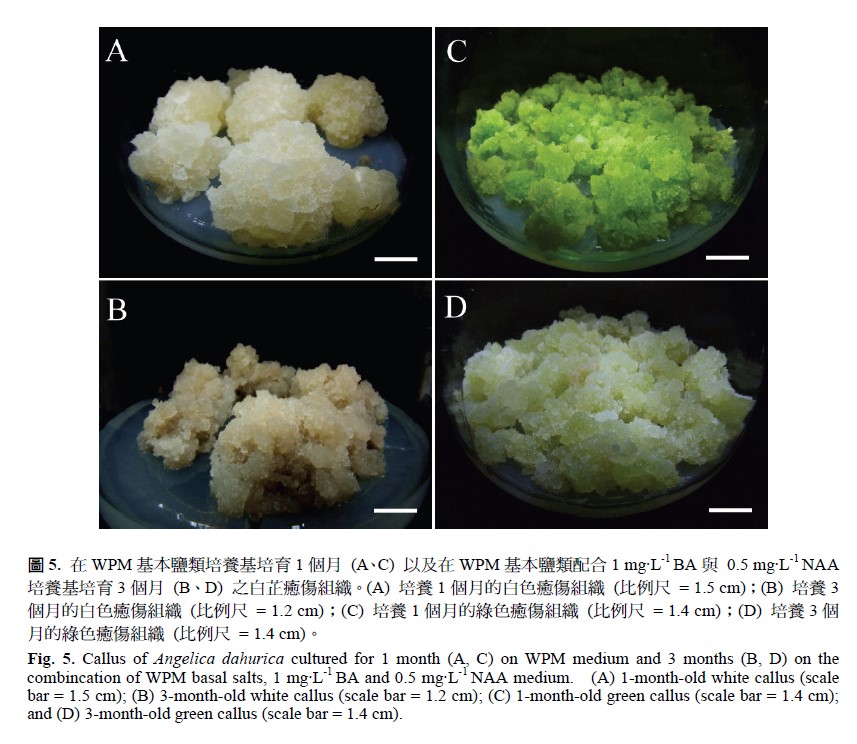All issues

Author:Yih-Juh Shiau*, Toong-Long Jeng, Jui-Lung Kao, Jui-Sheng Lai, and Chia-Hsin Huang
Abstract:
Angelica dahurica has long been a popular plant for traditional medicine by Chinese people. It is widely used to treat disorders, such as catarrh, nasal polypus and skin affections. The main active ingredients of A. dahurica are furo-coumarin derivatives, including imperatorin, angelical, and byak-angelicin. Information is scarce on extraction of imperatorin from microtubers and green callus of A. dahurica plants grown in tissue culture. The objective of this study was to investigate methods of extraction for imperatorin produced in explants of A. dahurica. Results showed that the fresh weight of callus of A. dahurica was the highest (25.0 g/flask) in 30-day-old cultures on the medium containing WPM basal salts supplemented with 30 g·L-1 sucrose and 8.5 g·L-1 agar, followed by cultures on B-5 basal salt medium (18.6 g/flask), 1/2 MS medium (9.7 g/flask) and MS medium (5.1 g/flask). The rate of formation of green callus was 60% after white callus of A. dahurica subcultured on WB1N0.5 medium for 90 days. Among the three solvents (methanol, water and ethanol) investigated, methanol was the best solvent for extraction of imperatorin from commercial root slices of A. dahurica which yielded 772.3 μg of imperatorin in each gram of dry sampling. Imperatorin in white callus from 3-month-old cultures on WPM medium was 32.0 μg·g-1, whereas imperatorin in microtubers from 3-month-old cultures was 83.3μg·g-1. This study suggests that it is possible for mass-production of imperatorin and mass-propagation of plantlets using microubers of A. dahurica.
Key words:Angelica dahurica, Explant, Root slice, Imperatorin
Download:![]() PDF Links
PDF Links
- 1. Development of Tractor-Mounted Seedling Transplanter for Sweet Potato
- 2. Synergistic Effect of Additional Gas on the Toxicity of Phosphine to Sitophilus oryzae and Sitophilus zeamais (Coleoptera: Dryophthoridae)
- 3. Effects of Temperature and Solar Radiation on Growth Traits and Plant Elements in Purple Leafy Sweet Potato
 Submit your manuscript
Submit your manuscript
 Guide for authors
Guide for authors